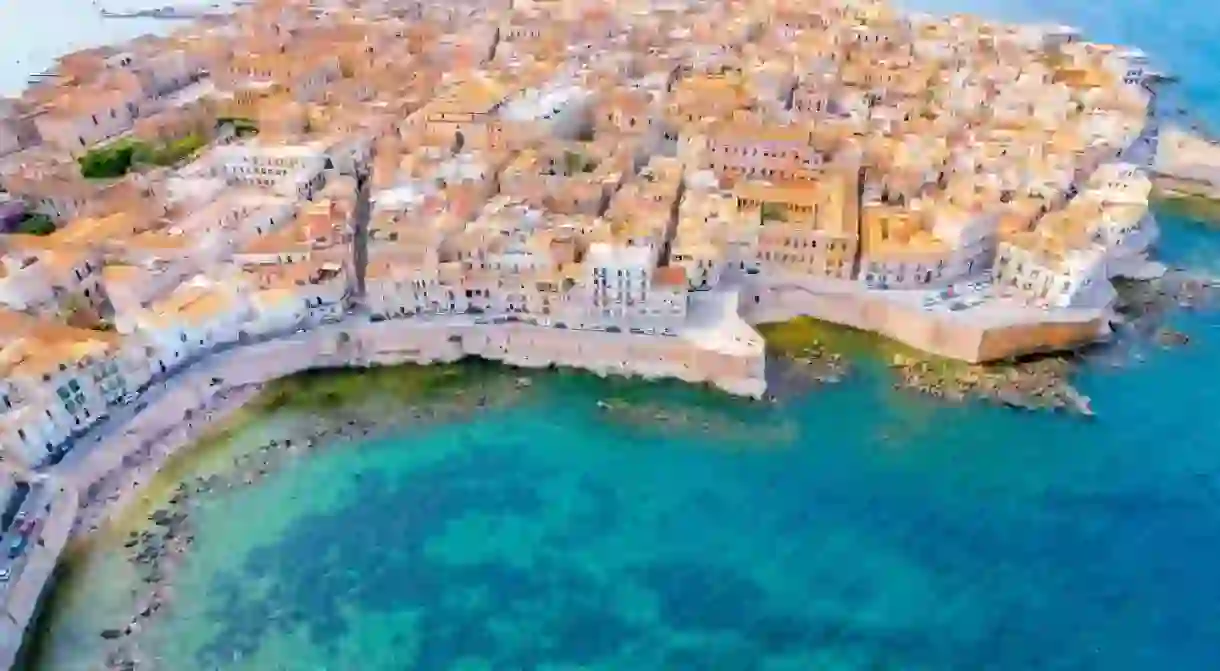The Top Things to See and Do in Syracuse, Sicily

Syracuse in Sicily has been an important site throughout history. It is now a city where ancient civilisations exist alongside modern culture, where visitors can see centuries-old ruins and shop for local produce all in the same day. Intrigued? Here are the top things to do in Syracuse.
Duomo
Architectural Landmark

The Duomo is considered the most important church in Syracuse and is under UNESCO protection. Its origins lie in the worship of the goddess Minerva, but the most striking feature has to be the combination of beautiful baroque and rococo architecture. The edifice was constructed in 1753 and is best admired from one of the cute cafes in the piazza.
Fontana Aretusa
Architectural Landmark

Fontana Aretusa, is a pretty fresh-water spring on Ortygia. It has a long literary history, having inspired Greek poets to create a myth about the water nymph Arethusa, who chose to be a spring rather than accept the advances of the river god. After that, the spring became a source of inspiration for many of the great poets, and is mentioned in John Milton’s Lycidas as well as Alexander Pope’s The Dunciad and Wordsworth’s The Prelude. It’s a lovely place for a bit of quiet reflection before continuing to explore the island.
Parco Archeologico della Neapolis
Architectural Landmark

Lovers of history should check out Parco Archeologico della Neapolis, which includes a 5th-century BCE Greek theatre, still used for classical shows in the spring. The archaeological park is also home to an ancient limestone quarry, catacombs and the Orecchio di Dionisio, a grotto named after Dionysius who used the perfect acoustics to hear his prisoners. Tickets are available at the souvenir kiosks on the road leading up to Ortygia.
Miqwe in Giudecca
Architectural Landmark
Mostly overlooked, the Syracuse Giudecca, or Jewish Quarter, is home to the oldest mikveh (a ritual bath) in Europe. During the Roman times, the Jewish community of Syracuse used the fresh water baths as a sacrament of absolution. In the 1980s, a Sicilian woman found the old synagogue and hoped to convert it into a hotel. During the reconstruction, workers found the ancient baths and it is now a historical site. Guided tours are available in English and reservations are only required for groups of five people or more.
Teatro Greco
Architectural Landmark

Found in the Archeological della Neapolis, Teatro Greco was built and rebuilt in the 5th and 3rd centuries, and is included as part of the Unesco World Heritage Site. During the 20th century, the theatre had a revival, when the Istituto Nazionale del drama Antico began to perform ancient Greek tragedies (in Italian) at sunset. The remarkable acoustics of the ancient theatre allow performers to act without a sound system – it’s a memorable experience to see them.
Museo Archeologico Regionale Paolo Orsi
Architectural Landmark

Museo Archeologico Regionale Paolo Orsi was established in 1780, when bishop Alagona inaugurated the museum. More finds were added when Paolo Orsi oversaw the museum from 1895 to 1934. The venue is organised into four sections, all which showcase archaeological finds from the prehistoric, Greek and Roman periods. If that’s not enough, the ancient Villa Landolina, just outside the museum, houses even more ancient remains, plus the tomb of August von Platen.
Galleria Regionale
Architectural Landmark
Art enthusiasts will love the Museo Regionale di Arte Medoevale e Moderna in Siracusa, or the Galleria Regionale, which includes baroque and Renaissance works housed in the 13th-century Palazzzo Bellomo. Don’t leave the gallery without seening Caravaggio’s Deposition of Santa Lucia (1608) and Antonello da Messina’s Annunciation (1474). The collection also includes items from the Byzantine period to the 19th century.
Temple of Apollo
Architectural Landmark

Dating to the 6th century BC, the Temple of Apollo is located just in front of Piazza Pancali. The edifice has gone through a number of uses; everything from a church during the Byzantine times to barracks for Spanish soldiers in the 16th century. Paolo Orsi pursued excavations during the 20th century, which allowed for the integrity of the ruins to be restored. The original terracotta from the temple can be found in the Museo Archeologico Regionale Paolo Orsi.
Ortygia
Architectural Landmark

The historical centre of Syracuse is on the island of Ortygia, connected to the mainland via two bridges. Visitors will appreciate the baroque architecture as well as the 13th-century Castello Maniace. Other popular stops include the Graziella, Bottari, Mastruarua, Spirduta, Maestranza and Turba districts, as well as the Piazza del Duomo and the Fontana Aretusa.
Trips and Tours in Italy
Architectural Landmark

Planning to take your holidays in Italy? We have an incredible collection of multi-day tour packages all over the country, including a number of Syracuse itineraries, ranging in length and cost. Check those out, as well as trips to Tuscany, the Dolomites and so much more, by clicking the button below.













